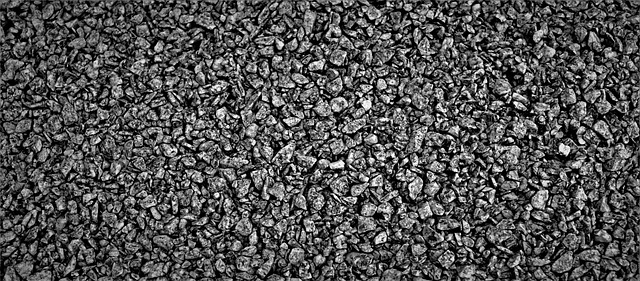Construction projects can disrupt communities and infrastructure, but utility mapping services using GIS, 3D, and subsurface mapping minimize these issues. These technologies provide accurate locations of critical utilities like water, gas, electrical, and sewer lines, enabling contractors to plan around them safely. Professional utility mapping contractors use advanced tools for accurate utility line mapping and underground utility mapping, reducing damage risks, timelines, costs, and disruptions during excavation. Choosing experienced contractors with strong safety records and timely project delivery is key to successful construction.
Construction disruptions cause significant delays and financial losses. Understanding these impacts is crucial for effective mitigation. This article explores the role of expert utility mapping services in minimizing such disruptions. We delve into the benefits of advanced subsurface utility mapping, GIS utility mapping, and 3D utility mapping technologies, highlighting their game-changing potential. Additionally, we provide insights on selecting the right professional utility mapping contractors to ensure accurate underground utility mapping solutions for your project.
Understanding Construction Disruptions and Their Impact
Construction projects, while essential for development and growth, often come with disruptions that can significantly impact nearby communities, businesses, and infrastructure. These disruptions range from traffic congestion and road closures to noise pollution and temporary loss of services like water, electricity, or gas. Understanding these potential issues is crucial in managing them effectively.
Accurate utility mapping services play a pivotal role in minimizing construction-related disruptions. Professional underground utility mapping, including GIS utility mapping and 3D utility mapping, provides comprehensive insights into the location and depth of critical subsurface utilities such as water lines, gas pipes, electrical cables, and sewer systems. This reduces the risk of damage during excavation and enables contractors to plan their work around these essential services, ensuring smooth project execution while protecting vital infrastructure.
The Role of Utility Mapping Services in Mitigation
Construction projects often face significant challenges when it comes to minimizing disruptions to existing infrastructure, especially in urban areas where critical underground utilities are abundant. This is where utility mapping services play a pivotal role in mitigating potential risks and ensuring seamless construction processes. Professional utility mapping contractors offer advanced solutions like accurate utility line mapping, 3D subsurface utility mapping, and GIS-based utility mapping.
These services provide project managers with detailed insights into the location and depth of underground utilities, helping them plan and execute construction activities without causing damage or disruptions. By leveraging technology such as GPS, ground-penetrating radar, and laser scanning, these experts create comprehensive digital maps that accurately represent the subsurface environment. This information is invaluable for identifying potential utility conflicts, facilitating safe excavation, and streamlining the entire construction process.
Advanced Mapping Technologies: A Game Changer
Advanced Mapping technologies have revolutionized the construction industry, offering unprecedented accuracy and efficiency in identifying and mapping underground utilities. Professional utility mapping services, such as GIS (Geographic Information System) utility mapping and 3D subsurface utility mapping, provide detailed and precise visualizations of hidden infrastructure. These solutions are instrumental in minimizing disruptions during construction projects, ensuring safe excavation and repair without damaging critical lines.
By leveraging accurate utility mapping solutions, including underground utility mapping and utility line mapping, contractors can avoid costly mistakes and delays. 3D utility mapping technology allows for a comprehensive understanding of the complex network beneath the surface, enabling informed decision-making and minimizing risks associated with traditional mapping methods. The result? Streamlined construction processes, reduced project timelines, and enhanced safety for workers and nearby communities.
Selecting the Right Utility Mapping Contractors for Your Project
Selecting the right utility mapping contractor is a critical step to minimize construction disruptions. Look for professionals offering advanced technologies such as GIS (Geographic Information System) utility mapping, 3D utility mapping, and accurate subsurface utility mapping. These innovative solutions enable precise identification and documentation of underground utilities, reducing the risk of damage during excavation.
When choosing a contractor, ensure they have extensive experience in your project’s specific type—residential, commercial, or industrial. Reputable firms will prioritize safety, adhere to industry standards, and maintain comprehensive liability insurance. Additionally, their capacity to deliver timely projects with minimal delays is essential, as quick turnaround times contribute to smoother construction schedules.
In today’s digital era, minimizing construction disruptions is crucial for successful project completion and community satisfaction. Expert mapping services, including advanced technologies like GIS utility mapping, 3D utility mapping, and accurate subsurface utility mapping, play a pivotal role in this process. By leveraging professional utility mapping services and selecting the right utility mapping contractors, construction teams can effectively navigate underground infrastructure, reduce delays, and enhance overall project efficiency. These innovative solutions are truly game changers, ensuring that construction projects stay on track while prioritizing safety and minimal disruption to nearby utilities.
